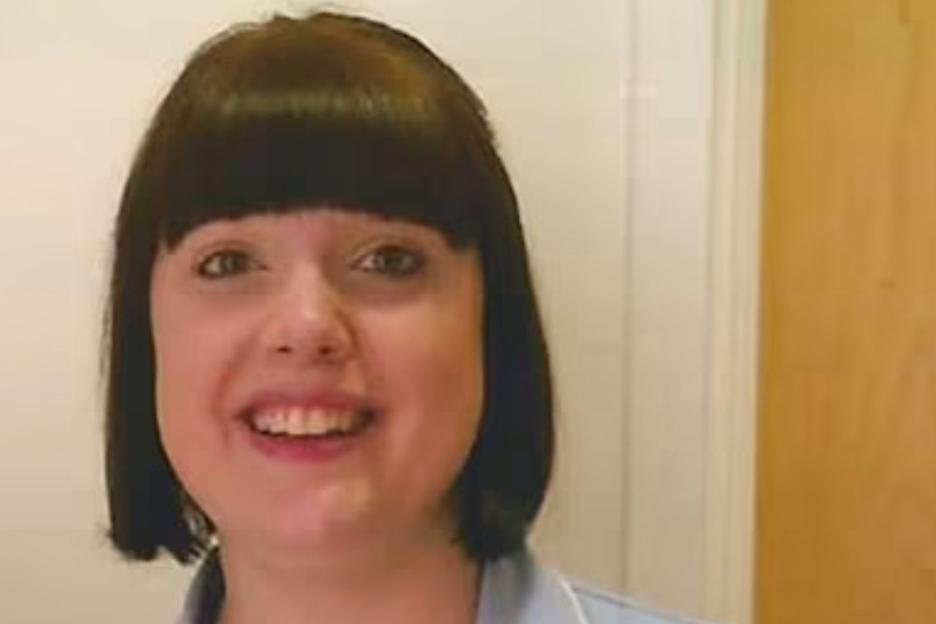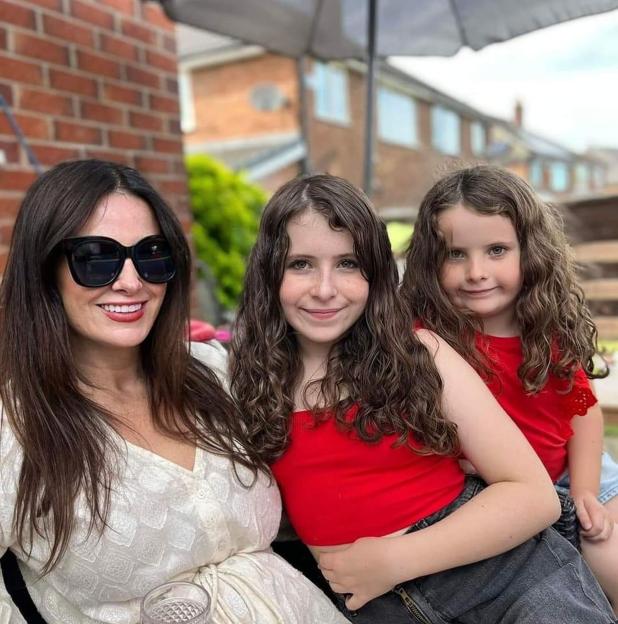Man’s head left hanging on by just his skin after he was internally decapitated in horror crash
Published on May 21, 2025 at 11:11 AM
Estimated Read Time:

A MAN was told he was the most broken patient paramedics had ever seen after being internally decapitated in a car crash.
Simon Clark, now 45, suffered severe brain trauma, more than two dozen major fractures, multiple organ damage and tore a two inch hole in the main artery carrying blood from his .
 Simon Clark was internally decapitated in a horror car crash
Simon Clark was internally decapitated in a horror car crash The accident claimed the life of his partner Lindy, who had been driving the car at the time
The accident claimed the life of his partner Lindy, who had been driving the car at the timeTragically the accident also claimed the life of his partner Lindy, who had been when their car swerved into the path of an oncoming car on a blind bend.
Simon doesn’t remember much more than a loud bang and intense pain in his left hip.
His next memory was of lying in the long grass with rain falling on his face.
“I took the full impact on my left side which is why I sustained so many broken bones,”;; he says.
“I shattered the top three vertebrae and completely separated my skull from my spine. My head was only held on by skin, muscle, nerves and other tissue. Basically, my head was flopping around like a chicken with its neck broken.”;;
Simon was put into a coma at the scene by the medics of the Great Western Air Ambulance and remembers nothing until two months later where he received the devastating news that the love of his life had died in the collision.
Paralysed and unable to speak, he was also told that he would never walk, eat or breathe independently again.
“I just had to lay there and listen to the never-ending story that was my prognosis,”;; he says.
“My brain was screaming at this point. I lurched from extreme survivor’s guilt to wanting to end it all.
“I even tried to bite my tongue off at one point but luckily I didn’t have the strength to do much more than make it very sore.
“The worst moments were lying in that hospital bed not long after leaving ICU, when all of the staff had finished for the day and my visitors had left.
“I would be left there in the dark, unable to move, unable to do anything for myself, barely able to speak. I had spent the majority of the day counting the dimples in the ceiling tiles and now I just had the beeping of the machines for company.”;;
Simon spent the long hours in total anguish and turmoil, wishing for death to take him.
“I truly wanted to die. Just to end the pain and torture of knowing my life was over and I’d never got to say goodbye to Lindy,”;; he says.
‘Just bad luck’
The cause of the crash in October 2019 will remain forever a mystery.
told Simon his partner was not speeding, had not been drinking and had done nothing suspicious.
They concluded it was a genuine accident and “just bad luck.”;;
Physically shattered and emotionally traumatised, he struggled to see any way forward.
But as the days and weeks wore on, Simon made a remarkable discovery.
He found that he could control his thoughts and in doing so, could decide to recover beyond a life of living in a hospital bed.
I made the firm decision that I would walk out of the hospital on my own two feet without any assistance, within six months of the accident
Simon Clark
“I decided I would not stop until I was fitter and stronger than I was before the accident. I made the firm decision that I would walk out of the hospital on my own two feet without any assistance, within six months of the accident,”;; he says.
Incredibly he did just that.
“I had nothing else to work with so I began to try and regain control of my mind,”;; he says.
“I didn’t have use of my body anymore so I had to try and save a tiny piece of Simon. I built a little fort in my mind where Simon could hide from all the horrible things that were happening.
“After many months of and physical pain my body started to respond.
“At first it was just being able to blink, when I had mastered that I was able to communicate with my family by spelling out words by blinking while they ran their fingers along a board with letters printed on it.
“Then I moved on to trying to wiggle a finger, and then maybe move my foot. It was an incredibly slow, frustrating period of slowly trying to move every single limb and then building up the strength so I could use them.
“Learning to walk again has been the most painful of all of my recovery.”;;
‘Nordic walking helped me’
After he left hospital, Simon discovered thanks to the help of his physiotherapist Melissa Domaile.
The method is an enhanced walking technique that uses poles to work your entire body not just your legs.
“So many physios told me all the things I would never do again,”;; he says.
“But Melissa took the time to get to know me and she saw my drive, she saw my love of the mountains and what I was willing to give to get back to them, to have a full and meaningful life again.
“Nordic Walking helped me walk a few paces without getting out of breath, which turned into walking around a field then walking the Everest Base Camp Trail less than five years after the accident.”;;
He has also trekked the Highlands, climbed Mount Toubkal in Northern and is now training to walk to the North Pole, determined to show that recovery â while painful and slow â is possible in the face of overwhelming odds.
 The cause of the crash in October 2019 will remain forever a mystery, but Simon has made a miraculous recovery
The cause of the crash in October 2019 will remain forever a mystery, but Simon has made a miraculous recovery After he left hospital, he discovered Nordic Walking
After he left hospital, he discovered Nordic Walking Simon still faces many health problems, but knows moving his body is excellent therapy
Simon still faces many health problems, but knows moving his body is excellent therapySimon, who had been working as an estate agent at the time of the crash, is still far from well. He is in constant pain, struggles with exhaustion and carries deep emotional scars from the accident.
He suffers from and crippling bouts of anxiety and , as well as nerve pain and brain damage.
“I still have a lot of problems with my heart and lungs,”;; he says.
“I’m working on about a third of my lung capacity and my heart beats frantically which can result in me passing out.
“I was warned by cardiologists not to let my heart rate go above 120 bpm as it will most likely cause a . Unfortunately just walking across a car park puts my heart above that.
“While training I am often in the 150-160 bpm range and on the way to Everest I pushed to 186 bpm.
“I will also need to travel to Svalbard very soon to do some cold testing and training to see how my body responds to extreme cold as I currently don’t feel any temperature changes. For me all weather conditions feel like .”;;
But Simon has to keep going. He knows moving his body is excellent therapy.
“The best recovery from all of this has been physical exercise, learning to get my life back and rebuilding my body, then simply just getting out into nature,”;; he says.
“A walk in the hills cures most problems and those that it can’t, it puts into perspective.”;;






